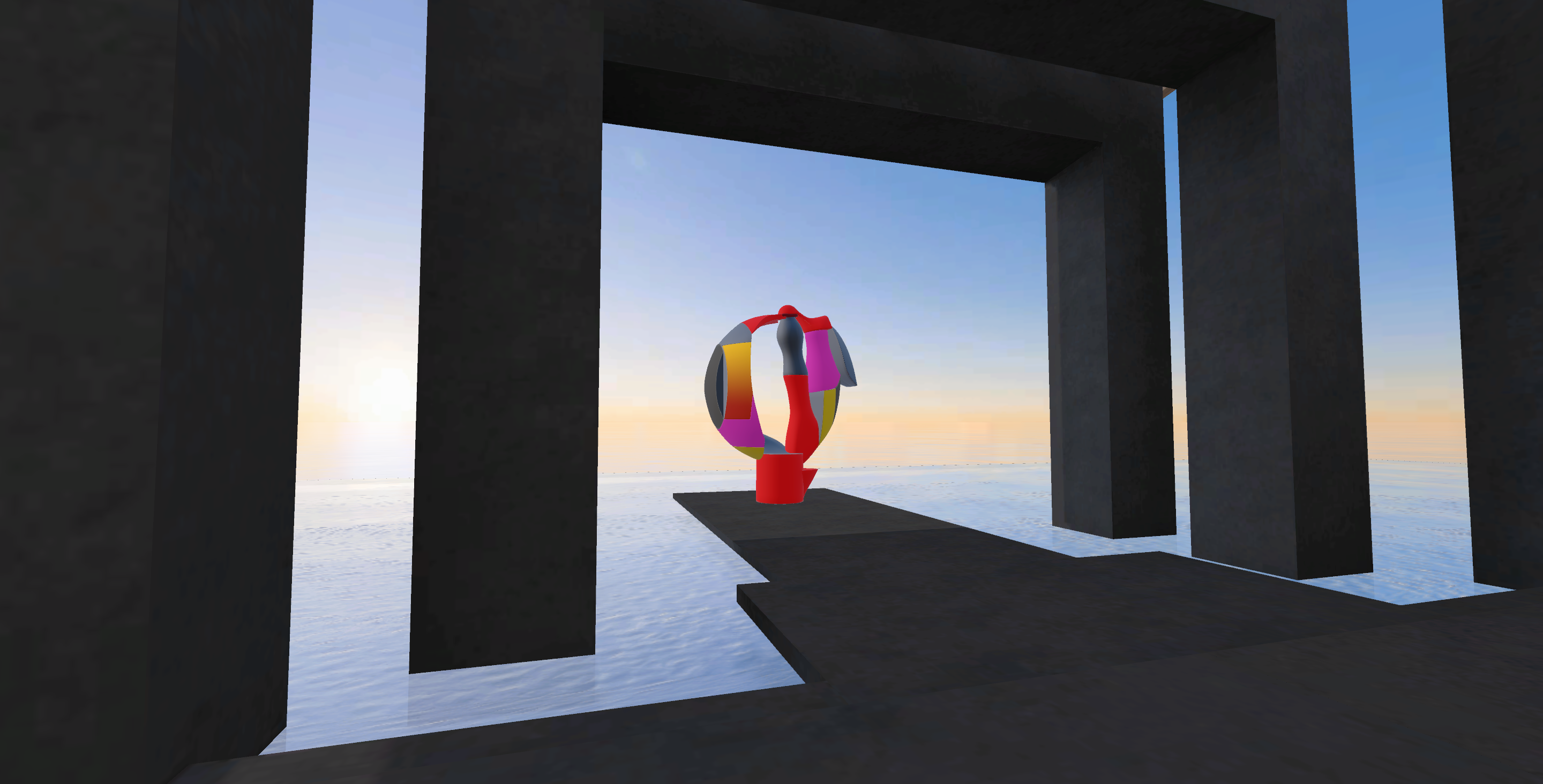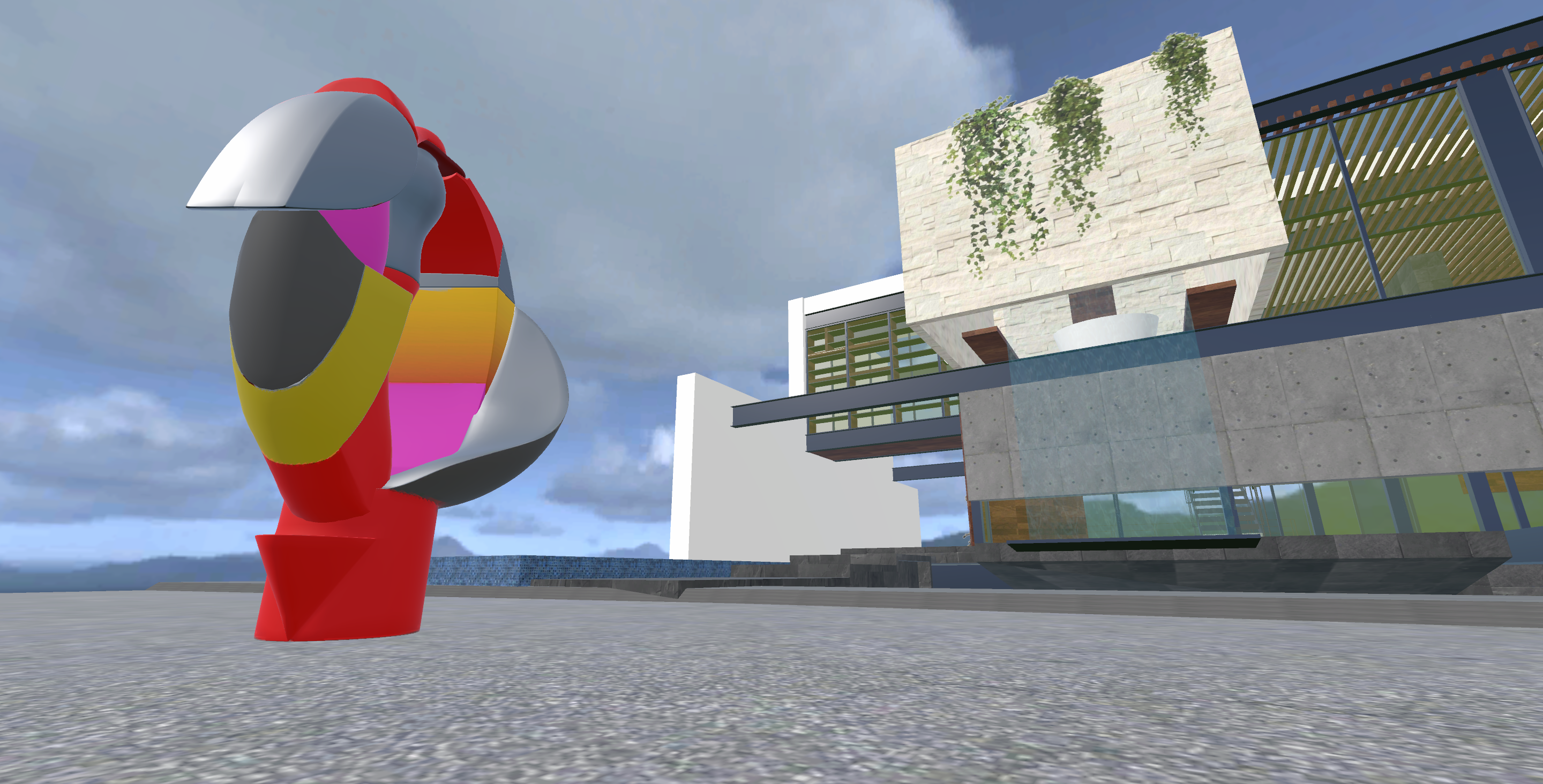In her XR Meta-Media Series, AI artist Carina Lue co-works with neural networks. She generates 3D sculptures from data of dropshipping products going viral on social media and translates the images to spatial models.
The Meta-Media Sculptures are a collection of abstract 3D objects generated by AI from data of dropshipping products going viral on social media. Dropshipping is a business model in which ecommerce entrepreneurs sell products without having to carry any inventory. When a store owner receives an order from a customer, they simply contact the supplier, who will then ship the products directly to the customer’s door. Dropshipping products are often found on AliExpress, a popular wholesale marketplace. The Meta-Media Sculptures reflect on underlying algorithms used on mass-media platforms and objects produced for the mainstream consumer target market. The artworks reflect on internet utopia, visionary ideas and contrast the mundane objects that they are based on.

Artist Statement:
In my "Meta-Media Sculpture" series, I use artificial intelligence (AI) to generate 3D sculptures based on popular items being sold on online marketplaces. This series is a continuation of my "Meta-Media" project, in which I explore the potential of AI to create innovative and thought-provoking art. By using a dataset of specific products and a neural network to generate new 3D models, I am able to create a conversation around the role of AI in the art world and its potential to enrich and augment human creativity. I also implement an intelligent image scaling technique and transform the images of the models into spatial experiences, which can be experienced on metaverse platforms, in immersive VR environments, or through AR. Through this process, I hope to examine the ways in which machines are becoming increasingly integrated into our society, the potential impact this may have on the future of art and society, and the question how scaling-systems work. My artistic practice is based on generative processes and the exploration of new technologies. I am inspired by the popularity of certain products online and the homogenization of styles as algorithms and humans try to imitate each other's successes. My goal is to create cyber-hybrid sculptures that are both aesthetically pleasing and informative, allowing viewers to learn about the products they are made from. I am also interested in the ways in which people use social media to connect with each other through shared interests in popular products, and the potential impact of these products on the environment. Through my "Meta-Media Sculpture" series, I aim to turn these often-criticized dropshipping products into something aesthetic without producing physical materials myself.
Meta-Media Aesthetics
Meta-media aesthetics are characterized by sensorial plurality, synaesthetic qualities, and the ability to make human culture tangible through its material nature. Through media, cultural processes become easier to experience and understand, providing us with both insights and experiences we may not have had before. Meta-aesthetics suggest that the connection and relationship between the senses is a crucial aspect of meta-media experiences, which are not just about individual sensory inputs, but rather about the way in which those sensory inputs combine and interact to create a holistic experience.
The use of the term "metaform" to describe post-contemporary media also highlights the material nature of virtual culture in the digital age. The fact that media experiences are increasingly dependent on their material nature means that we are able to touch and experience the dynamics and evolution of cultural processes in a way that was not possible in the past. This increased awareness of the relevance of cultural processes in our daily lives is a consequence of the meta-media's ability to transfer these processes from an invisible dimension to our daily physical experiences.
The idea that contemporary meta-media is the expression of human culture as increasingly dependent on its material nature, suggests that those experiences are complex and multi-layered, involving a rich interplay between the senses and a deep connection to the material world. This understanding of media aesthetics has significant implications for the way in which we approach and analyze media experiences.
Meta media art is a growing art form that uses artificial intelligence (AI) to reflect on the role of media in our lives. This type of art often explores the relationship between humans and technology, and the ways in which media shapes our perceptions of the world around us.
One of the key characteristics of meta media art is its use of AI to create and manipulate media. This can include using AI to generate images, sounds, or other sensory experiences, or to manipulate existing media in creative ways. Meta media artists create artworks that are dynamic and interactive, responding to the input of viewers or the environment in which they are exhibited. Many meta media artworks explore the ways in which media shapes our perceptions and experiences of the world, and the ways in which we are influenced by the constant flow of information and images that surrounds us. Through their use of AI and other technologies, meta media artists often seek to challenge and subvert our assumptions about the role of media in our lives.
Meta media art can take many different forms, from interactive installations and performances to digital artworks and online experiences. Some meta media artists work with physical media such as video, sound, or projections, while others create purely digital artworks that exist only in the virtual world.

Meta-Media Mind
The proliferation of AI generated knowledge has led to the emergence of a new state of mind, which has been referred to as a "meta-media" mind. This state of mind is characterized by the ability to process and integrate large amounts of information from multiple sources and formats, and to adapt and respond to changing conditions and contexts.
One of the key drivers of the meta-media mind is the growing use of AI algorithms to generate knowledge. AI algorithms are able to process large amounts of data and information, and to identify patterns and connections that would be difficult or impossible for humans to detect. This allows AI algorithms to generate new knowledge, insights, and perspectives that can be used to inform and enhance our understanding of the world.
Another driver of the meta-media mind is the increasing integration and interconnectivity of different media and information sources. As more and more information becomes available online, it is easier for people to access and combine information from multiple sources and formats, such as text, images, audio, and video. This allows people to create and share new forms of knowledge and understanding, which can be more complex and dynamic than traditional forms of media.
The meta-media mind has significant implications for society. On the one hand, it has the potential to greatly enhance our ability to process and understand complex information and situations. By enabling us to access and combine information from multiple sources and formats, the meta-media mind can help us to gain new insights and perspectives, and to make more informed and effective decisions. On the other hand, the meta-media mind also presents challenges and risks, such as the potential for information overload, or the difficulty of verifying the accuracy and reliability of information.
The emergence of the meta-media mind is a consequence of the growing use of AI to generate knowledge, and the increasing interconnectivity of different media and information sources. This state of mind has the potential to greatly enhance our ability to process and understand complex information, but it also presents challenges and risks that need to be carefully considered and managed.
XR Meta-Media Sculpture #1
Media: https://vimeo.com/775482103
More Information:
